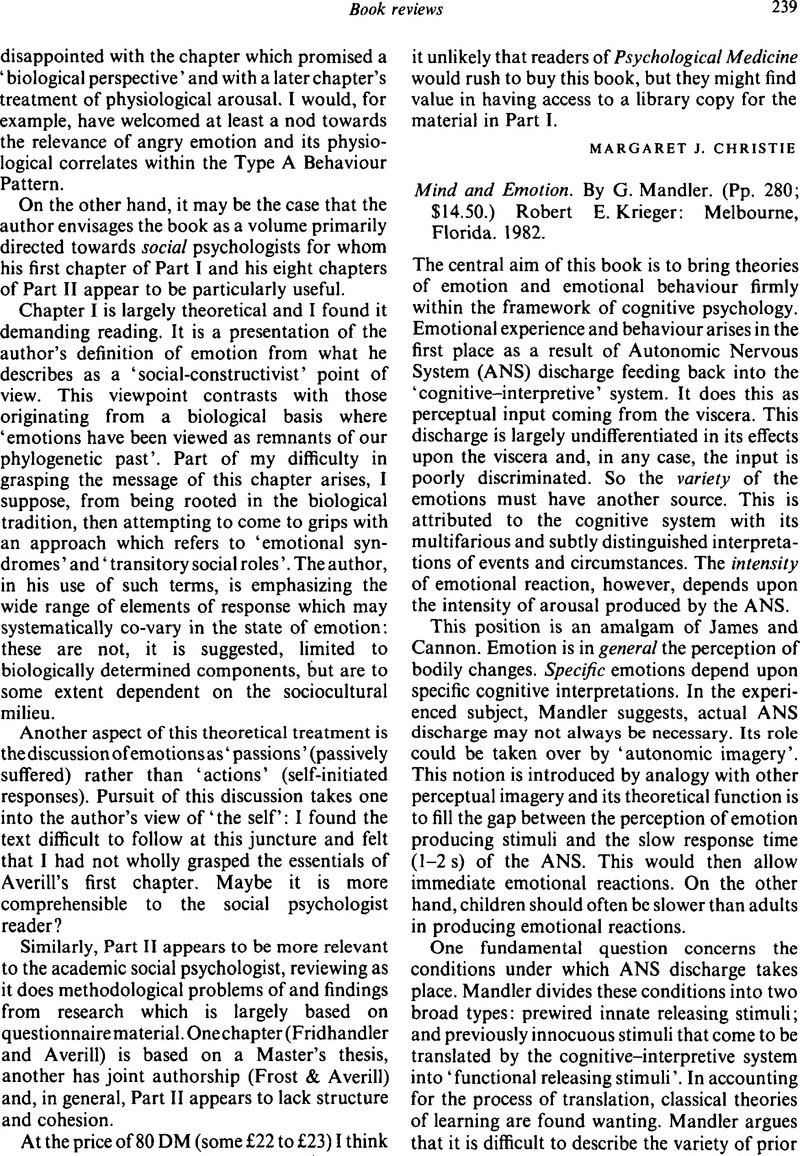No CrossRef data available.
Article contents
Mind and Emotion. By G. Mandler. (Pp. 280; $14.50.) Robert E. Krieger: Melbourne, Florida. 1982.
Published online by Cambridge University Press: 09 July 2009
Abstract
An abstract is not available for this content so a preview has been provided. Please use the Get access link above for information on how to access this content.

- Type
- Book Reviews
- Information
- Copyright
- Copyright © Cambridge University Press 1984
References
Campos, J. J. (1983). The importance of affective communication in social referencing: a commentary on Feinman. Merrill-Palmer Quarterly 29, 83–87.Google Scholar
Feinman, S. (1982). Social referencing in infancy. Merrill-Palmer Quarterly 28, 445–470.Google Scholar
Gibson, E. J. (1982). The concept of affordances in development: The renascence of functionalism. In The Concept of Development: The Minnesota Symposia on Child Psychology, Vol. 15 (ed. Collins, W. A.), pp. 55–81. Lawrence Erlbaum: Hillsdale N.J.Google Scholar
Klinnert, M., Campos, J., Sorce, J., Emde, R. & Svedja, M. (1983). Emotions as behaviour regulators: Social referencing in infancy. In Emotions in Early Development, Vol. 2: The Emotions (ed. Plutchik, R. and Kellerman, B. H.), pp. 57–86. Academic Press: New York.CrossRefGoogle Scholar
Trevarthen, C. (1979). Instincts for human understanding and for cultural cooperation: their development in infancy. In Human Ethology: Claims and Limits of a New Discipline (ed. Von Cranach, M., Foppa, K., Pepenies, W. and Ploog, D.), pp. 530–594. Maison des Sciences de l'Homme and Cambridge University Press: Cambridge.Google Scholar


